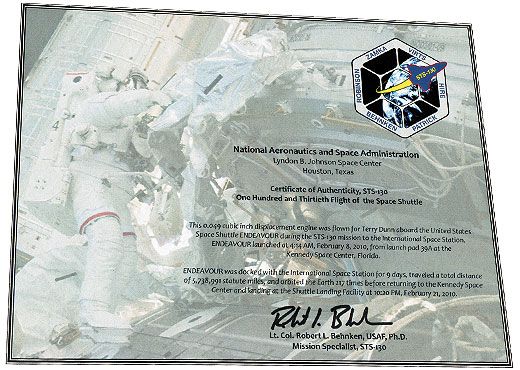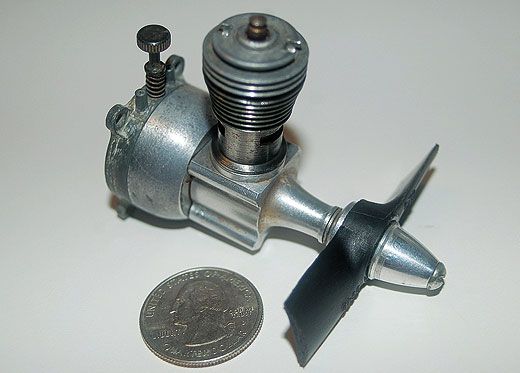Flights & Fancy: What Would You Send to Orbit?
Mementoes in an astronaut’s luggage
/https://tf-cmsv2-smithsonianmag-media.s3.amazonaws.com/filer/Flights_and_Fancy_11-01-11_1_MAIN.jpg)
As a United Space Alliance employee providing engineering support for crew training, I had the pleasure of working with U.S. Air Force Lieutenant Colonel Robert Behnken, who flew on space shuttle missions STS-123 and -130. During the final weeks of training for -130, Bob offered to carry a personal item of mine into space. His offer was flattering, but it also presented a challenge. How do you choose an object worthy of such an experience?
The widget of my choosing would undergo all the physical contortions of a space shuttle flight: The uneasy twang just before liftoff (the swaying of the shuttle stack caused by the three main engines firing), the cacophonous shove of the solid rocket boosters, and the majestic awkwardness of zero-G.
My choice was made somewhat easier by the need to keep the item small. Whatever I chose would have to fit within a tiny imaginary box, one whose dimensions were never given. Bob said that wedding rings were a popular selection. So much for Granddad’s lucky anvil.
After I mulled the options and whined to my wife, Nicole, she eased my burden. Sensing that I felt obligated to choose an object meaningful to our whole family, she said, “The kids and I already have plenty of space stuff. This should be just for you.”
Soon I had two candidates, which represented my two major interests: music and model airplanes. One was the trumpet mouthpiece that had escorted me around the country while I was a member of the Blue Devils Drum and Bugle Corps, a larkish adventure that proved to be the swan song of my musical ambitions. The second: a Cox .049 Babe Bee engine, an internal-combustion icon among aeromodelers.
In the end, I chose the motor. It was a Cox motor that had provided my first taste of powered flight. The tiny buzzing engine pulled a plastic Fairchild PT-19 through meandering circles as I stood in the center, fighting off vertigo. In later years, a stable of Babe Bees powered countless projects and endured my compulsion to disassemble and investigate all things mechanical.
I still bear scars from moments of carelessness around whirling six-inch propellers, but I can think of no other engine that could have powered my explorations of flight within the skills and budget of a 12-year-old. Those experiences drove my ambition to study engineering and become a part of the space program.
Cox engines are no longer produced, but during its 40-year run, the factory churned out the nitro-burning engines by the million. Any American kid with an interest in model airplanes, cars, or boats since 1956 probably owned at least one Babe Bee.
After I had chosen my personal space shuttle payload (NASA called it “ballast”), I realized that I no longer owned any .049s. I had given away the whole stash when I converted my fleet of radio-controlled models to electric power. I e-mailed my flying buddies, explaining that I needed a Babe Bee, stat, and was immediately offered multiple engines. The engine I gave to Bob was not one I had ever used, but that was of no concern to me for this purely symbolic gesture.
When Endeavour launched in the early morning of February 8, 2010, I watched on a TV monitor with other support engineers at the Johnson Space Center in Houston. We all cheered the liftoff, the astronauts, and our good fortune for being part of such an accomplishment. I added a silent Hooray for the Babe Bee, nestled somewhere among the people, parts, and provisions being propelled atop columns of flame to the International Space Station.

